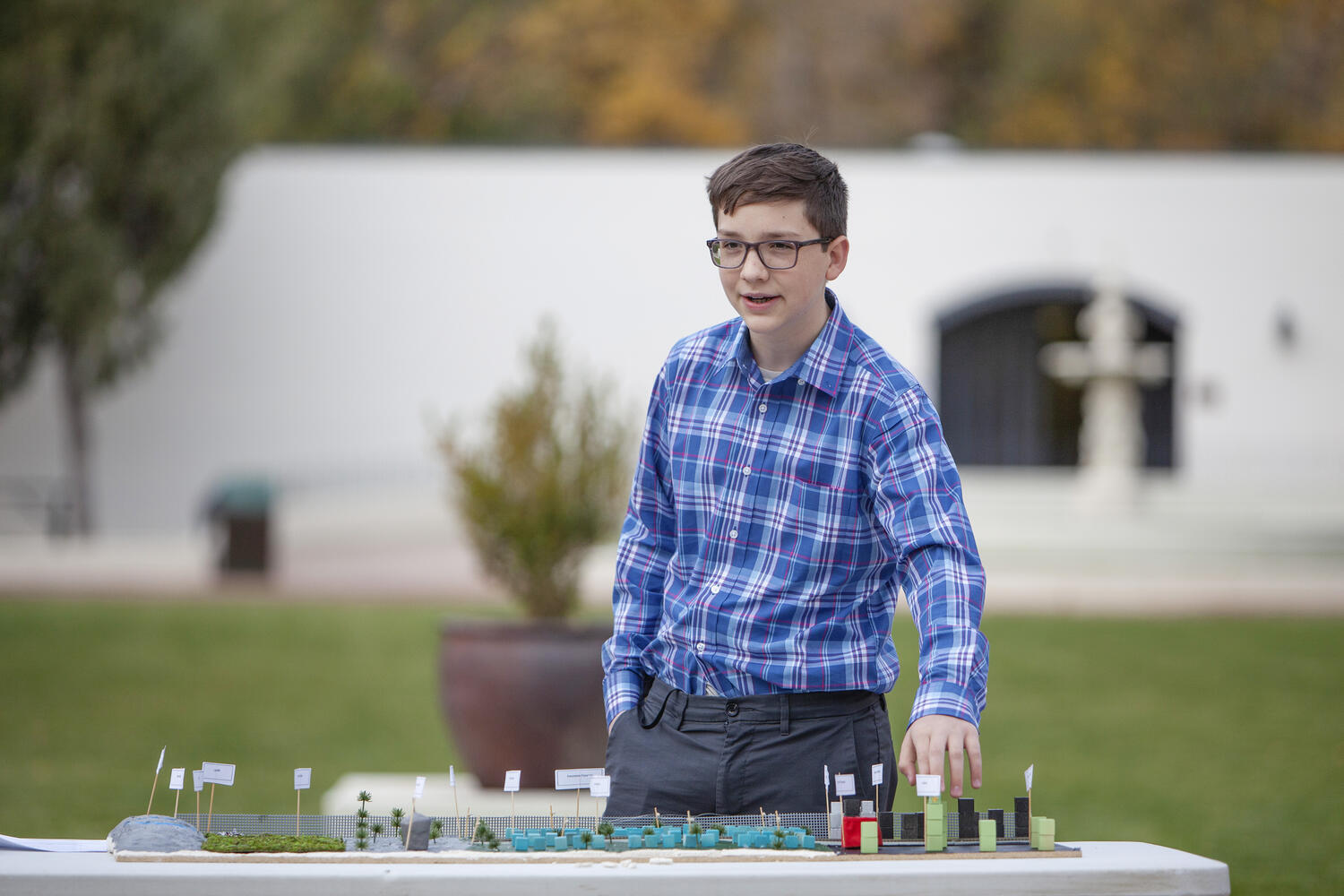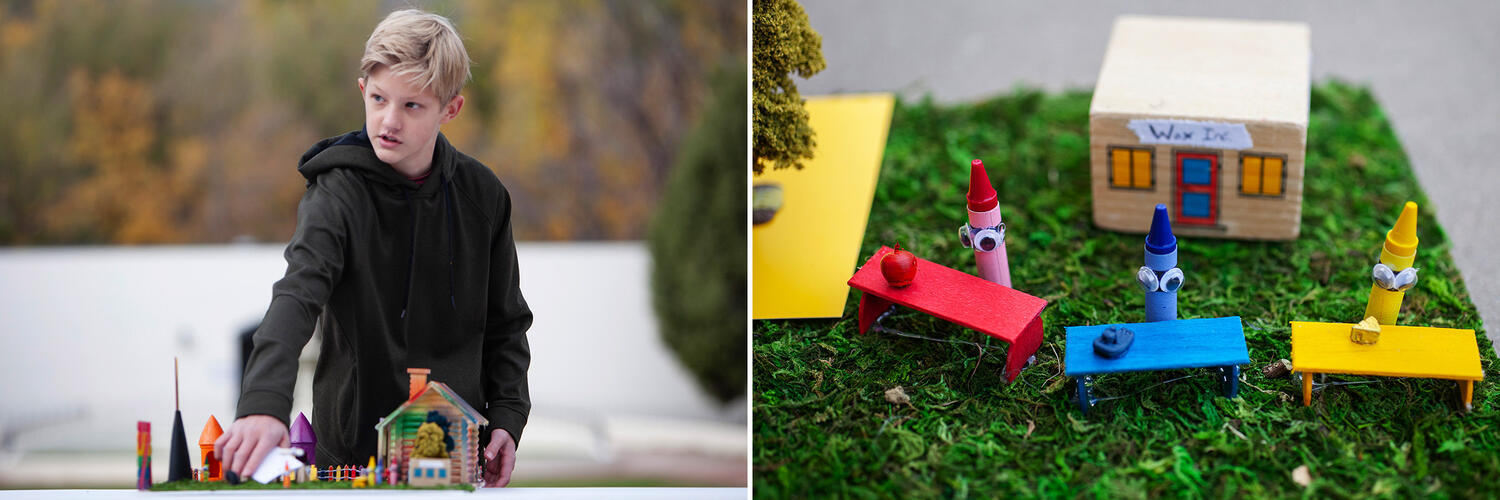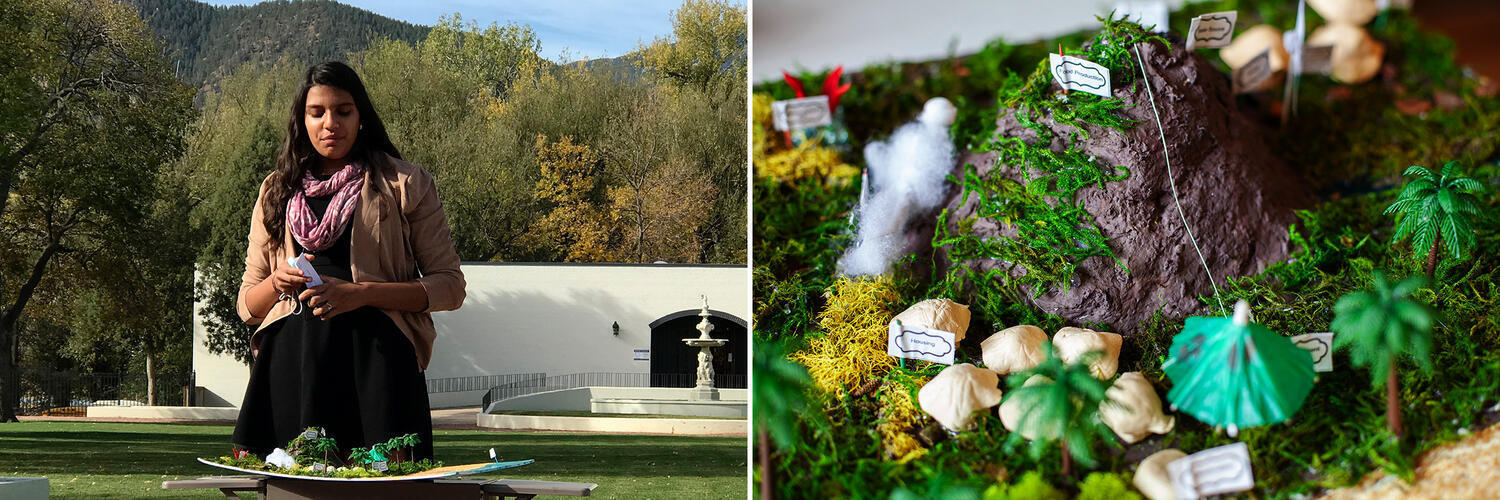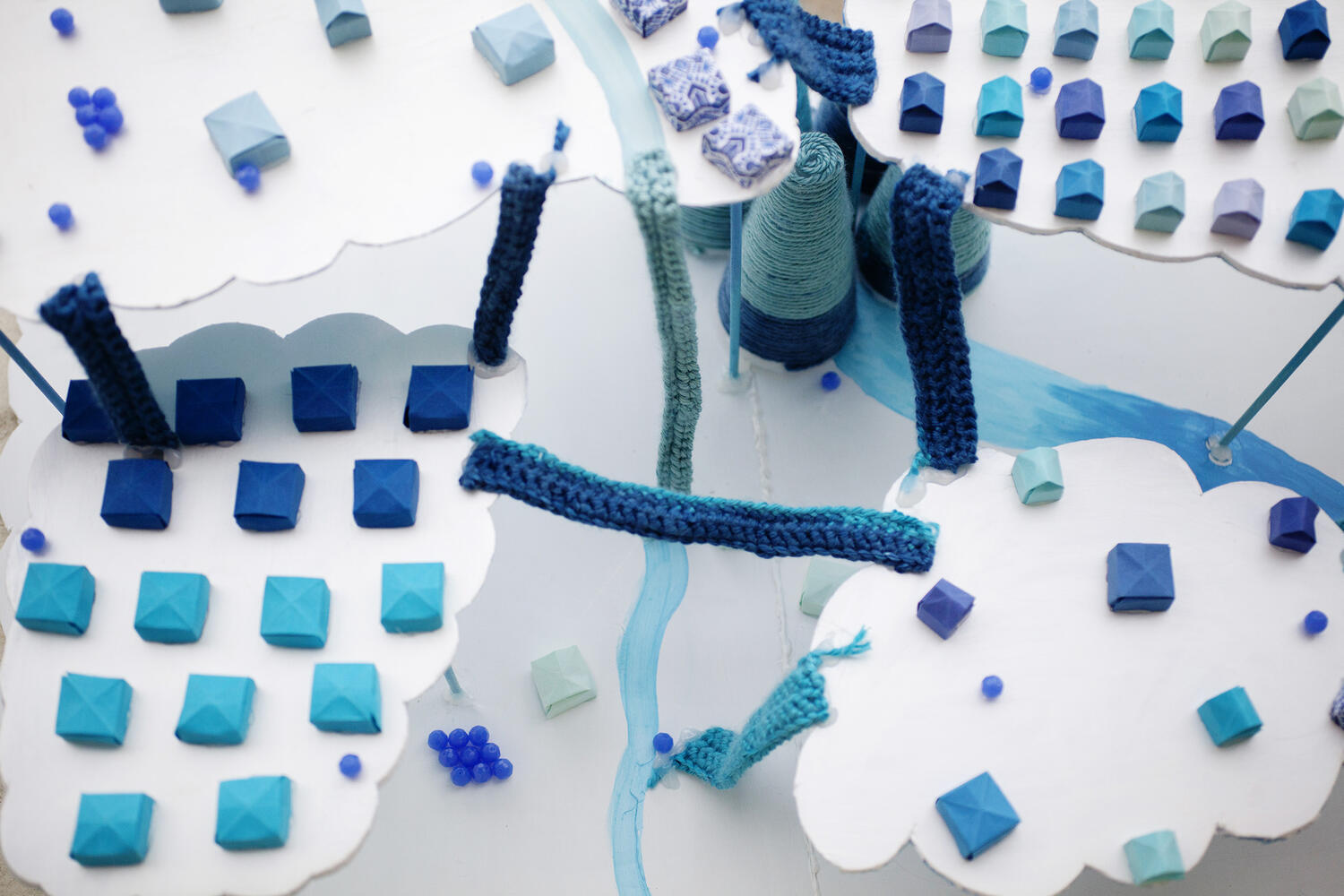
The mountain town Pow Wow at 89,500 feet, where residents ski everywhere, and children learn at school how to make skis and design ski runs. Alien-like creatures whose river contains a green liquid called glassay that cures COVID-19 in two days with one gulp. Raindrops that are citizens of a megacloud, where slavery has never existed because they learned what it did to the United States and wish not to repeat those mistakes but to fix them.
These are some of the elements of culture that 8th graders imagined for their Civilization Projects in Ancient Civilizations history class.
“This is an extensive project that requires students to think creatively about ancient civilizations of the past, while at the same time letting their creativity and imaginations take them places they never dreamed,” said teacher Amos White, who has taught at CSS for 22 years.
Ancient Civilizations is a survey course in which 8th grade students examine the cultures of the ancient world in order to understand and compare the elements that constitute each society. They discover why and how these civilizations came to exist. Civilizations studied include ancient Mesopotamia, India, China, and Africa, as well as the Near East, Egypt, Greece and Rome. Students are introduced to historical research and engage in critical examination of primary documents and sources while studying the principles, theory, and history of historical writing.
A major component of the class is students creating their own civilization, which includes writing a paper, building a model, and giving a five- to 10-minute oral presentation about their model and civilization.
Wyatt S. ’25 created Crayola, a civilization of crayons whose meaning of life is simply to be colorful. The only resource they use is wax, and because it produces no emissions and is recyclable, Crayola has reversed global warming. The wax is grown in tree farms, then molded into items such as food and cars. There’s no sexism because there’s only one gender.

Laws in Crayola include no killing and no hurting others, and they are not allowed to create inappropriate things out of wax in public. There are no police, but citizens can make arrests. For those who break the laws, the punishment is getting melted for materials.
“I got to experiment with all different ideas of what I could do, and it was cool that I actually got to make it. It wasn’t just a project on paper but also a model,” Wyatt said. “It was fun to create your own civilization and create your own laws - and the people you made didn’t have to follow them either. You got to do whatever you wanted.”
Students write a three- to five-page paper that identifies and explains the seven elements of culture:
- Geography
- Economics
- Religion and philosophy
- Knowledge, education, and the arts
- Political science
- Sociology
- History

There is no limit in terms of setting and what creatures populate their civilization, but the organisms must have human needs. The cultures must also meet the basic criteria for a civilization: surplus of food, division of labor, and living in cities. Students are encouraged to be as creative as possible in “solving” societal problems of today such as pollution, energy shortages, transportation needs, food production, and waste disposal.
“I learned that civilizations have a lot of different things that they need to function, and it’s a lot of work,” said Asha M. ’25, whose civilization is named Ashlandia, a tropical island where the people are experts in renewable energy, recycling, and leaving a very small environmental footprint. Their main goal is to live in harmony with their environment. The two Gods are Flora and Fauna, symbolizing how important plants and animals are.

The written paper serves as guidance for students to build a three-dimensional model of a city from their civilization. The models must display and effectively organize the following:
- Food production and distribution systems
- Transportation
- Water sources
- Waste disposal
- Energy/utility sites
- Business and government center locations
- Housing needs
- Entertainment options
- Religious gathering sites
A benefit of this hands-on project is it helps students understand what all goes into a civilization.
“It gives them a visual of their civilization. It brings all of these elements together,” Mr. White said. “We are going to use this framework of the seven elements of culture throughout the whole year as we explore various civilizations, so it’s really important that we reinforce it.”
Ryder L. ’25 honed skills that he will no doubt use in Upper School, college, and beyond.
“Time management was a big thing,” he said. “We had a month to work on this and had to do it in chunks. We learned how to manage what things would work best for us.”
Ryder’s civilization, Roronia, stems around a theocracy based on strict laws, where humans have deprived it of almost everything, except metal that is being mined. They export nuclear weapons to allied nations. Children are never told what art is because art materials are considered unnecessary, which is why art disappeared several generations ago. The god of Roronia is the Lord Ruler, and the meaning of life for Roronians is to be loyal and submissive to Lord Ruler’s demands.
“In class we learned how history can be looked at in different ways,” Ryder said. “We’ve been learning that some interpretations mean this or that. For this project, we get to make our own history, and we can make it however we want, which is interesting to learn.”
On the megacloud Mera, Norah O. ’25 created a civilization where raindrops are experts in advanced chemistry after nine years of schooling. They don’t have a religion, believing in karma, luck, and people making their own decisions. The raindrops stem from a dream of Norah’s.

“Raindrops believe that they exist to help humanity and their goal is to save humanity from their self-destructive actions before humans destroy Earth. It is unacceptable to discriminate against anyone for any reason in Merian society, and raindrops are generally very morally strong,” she wrote in her paper.“ They believe firmly in kindness, compassion, and equality.”
Alumni of The Colorado Springs School often relay vivid accounts of Mr. White’s teaching style and equate the 8th Ancient Civilization class as a rite of passage. As our mission is rooted in critical-thinking, this academic pursuit is yet another example of students actively engaged in their learning and applying concepts in relevant ways.


